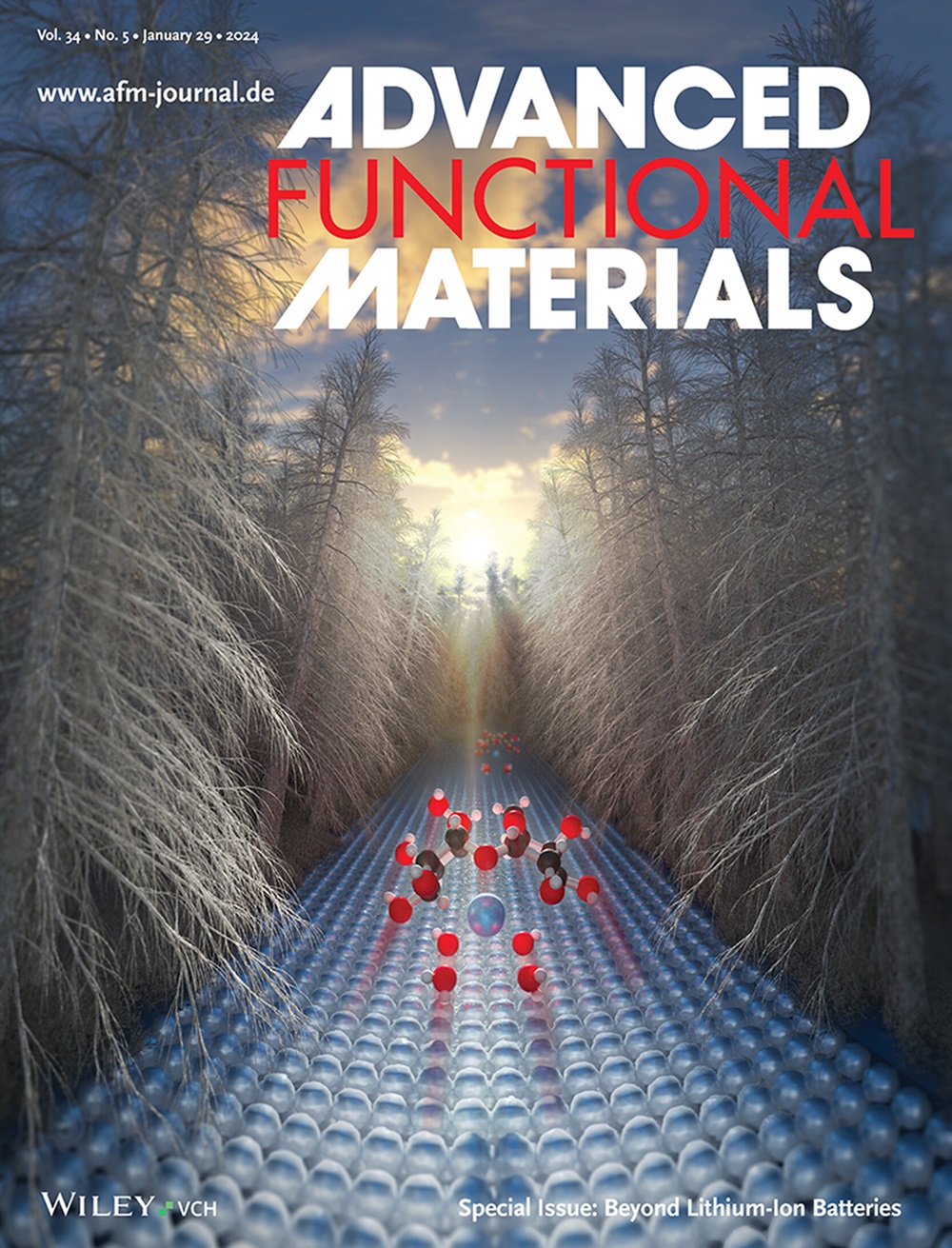Multi-Axial Broadband Photopyroelectric Response in Biaxial Perovskite Ferroelectric Crystals Driven by the Ferro-Pyro-Phototronic Effect
IF 18.5
1区 材料科学
Q1 CHEMISTRY, MULTIDISCIPLINARY
引用次数: 0
Abstract
Broadband photopyroelectric photodetectors (PDs) based on single crystal (SC) show potential in near-infrared detection and imaging, attributed to their high crystalline properties, lack of grain boundaries, and bias-free. Nonetheless, the distinctive characteristic is attainable only with PDs crafted via the polar crystallographic axis direction. This constraint directly results in the reported SC-based photopyroelectric PDs being uniaxial, thus elevating the intricacy and expense in manufacturing devices. Herein, a multi-axis SC-driven broadband PD is realized, employing the ferro-pyro-phototronic (FPP) effect in a biaxial ferroelectric EA4Pb3Cl10 (1, EA = ethylamine). In detail, the pyroelectric coefficients of 1 along the c- and b-axis are ≈ 2.6 × 10−3 and ≈ 3.5 × 10−3 µC cm−2 K−1, respectively, comparable to those of conventional pyroelectric materials like PVDF (≈ 2.7 × 10−3 µC cm−2 K−1). Importantly, this device surpasses its inherent optical bandgap to allow for a broad response from UV (UV, 266 nm) to near-infrared (NIR, 980 nm) wavelengths along both axes at zero bias. Such advancement signifies a major progress in the realm of SC-based multidirectional photopyroelectric detection, complete with broadband response.

求助全文
约1分钟内获得全文
求助全文
来源期刊

Advanced Functional Materials
工程技术-材料科学:综合
CiteScore
29.50
自引率
4.20%
发文量
2086
审稿时长
2.1 months
期刊介绍:
Firmly established as a top-tier materials science journal, Advanced Functional Materials reports breakthrough research in all aspects of materials science, including nanotechnology, chemistry, physics, and biology every week.
Advanced Functional Materials is known for its rapid and fair peer review, quality content, and high impact, making it the first choice of the international materials science community.
 求助内容:
求助内容: 应助结果提醒方式:
应助结果提醒方式:


